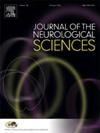Electronic health record analysis reveals no association between COVID-19 vaccines and ischemic stroke
IF 3.2
3区 医学
Q1 CLINICAL NEUROLOGY
引用次数: 0
Abstract
Background
We aimed to conduct a comprehensive investigation of the association between COVID-19 vaccination and incident ischemic stroke.
Methods
Using data from the National COVID Cohort Collaborative (N3C) database, we identified 119,275 patients (n = 39,922 vaccinated, n = 79,353 unvaccinated) who were at least 16 years of age and suffered ischemic stroke between February 2021 and April 2023. We applied the Self-Controlled Case Series (SCCS) to estimate the association between multiple vaccine-type-dose combinations and risk of incident ischemic stroke. We calculated incident rate ratios (IRRs) to compare incidence of ischemic stroke during the 28-day risk period following vaccine or SARS-CoV-2 exposure versus baseline periods of no vaccine exposure. Because patients who experience strokes are unlikely to receive the first or subsequent vaccinations, we applied SCCS methods capable of handling such event-dependent exposure to ensure valid results.
Results
Using the SCCS method robust to event-dependent exposures, no associations between any of the vaccine exposures and incident ischemic stroke were found. When we applied the standard SCCS, however, relative to baseline, there was elevated risk of incident ischemic stroke following first doses of BNT162b2 (IRR = 1.42, 95 % CI: 1.24–1.62), mRNA1273 (IRR =1.37, 95 % CI: 1.16–1.62), and Ad26.COV2·S (IRR = 1.40, 95 % CI: 1.08–1.81) vaccine types. No significant results emerged for the Bivalent vaccines. Effect sizes were larger in patients vaccinated once versus multiple times, implying ischemic stroke incidence likely prevented patients receiving initial and/or subsequent vaccinations.
Conclusions
Results indicate no association between mRNA or adenovirus COVID-19 vaccines and ischemic stroke.
电子健康记录分析显示COVID-19疫苗与缺血性卒中之间无关联。
背景:我们旨在全面调查COVID-19疫苗接种与缺血性脑卒中发生率之间的关系。方法:使用来自国家COVID队列协作(N3C)数据库的数据,我们确定了在2021年2月至2023年4月期间至少16岁的缺血性卒中患者119,275例(n = 39,922例接种疫苗,n = 79,353例未接种疫苗)。我们应用自我控制病例系列(SCCS)来估计多种疫苗类型剂量组合与缺血性卒中发生风险之间的关系。我们计算了发生率比(IRRs),以比较接种疫苗或SARS-CoV-2暴露后28天风险期与未接种疫苗基线期缺血性卒中的发生率。由于中风患者不太可能接受第一次或随后的疫苗接种,我们应用了能够处理此类事件依赖暴露的SCCS方法,以确保有效的结果。结果:使用对事件依赖暴露具有鲁棒性的SCCS方法,未发现任何疫苗暴露与缺血性卒中事件之间的关联。然而,当我们应用标准SCCS时,相对于基线,首次给药BNT162b2 (IRR = 1.42, 95% CI: 1.24-1.62)、mRNA1273 (IRR =1.37, 95% CI: 1.16-1.62)和Ad26后发生缺血性卒中的风险升高。COV2·S (IRR = 1.40, 95% CI: 1.08-1.81)疫苗类型。二价疫苗未出现显著结果。接种一次疫苗的患者的效应值大于多次接种的患者,这意味着缺血性卒中的发生率可能会阻止患者接受首次和/或随后的疫苗接种。结论:结果表明mRNA或腺病毒COVID-19疫苗与缺血性脑卒中无相关性。
本文章由计算机程序翻译,如有差异,请以英文原文为准。
求助全文
约1分钟内获得全文
求助全文
来源期刊

Journal of the Neurological Sciences
医学-临床神经学
CiteScore
7.60
自引率
2.30%
发文量
313
审稿时长
22 days
期刊介绍:
The Journal of the Neurological Sciences provides a medium for the prompt publication of original articles in neurology and neuroscience from around the world. JNS places special emphasis on articles that: 1) provide guidance to clinicians around the world (Best Practices, Global Neurology); 2) report cutting-edge science related to neurology (Basic and Translational Sciences); 3) educate readers about relevant and practical clinical outcomes in neurology (Outcomes Research); and 4) summarize or editorialize the current state of the literature (Reviews, Commentaries, and Editorials).
JNS accepts most types of manuscripts for consideration including original research papers, short communications, reviews, book reviews, letters to the Editor, opinions and editorials. Topics considered will be from neurology-related fields that are of interest to practicing physicians around the world. Examples include neuromuscular diseases, demyelination, atrophies, dementia, neoplasms, infections, epilepsies, disturbances of consciousness, stroke and cerebral circulation, growth and development, plasticity and intermediary metabolism.
 求助内容:
求助内容: 应助结果提醒方式:
应助结果提醒方式:


